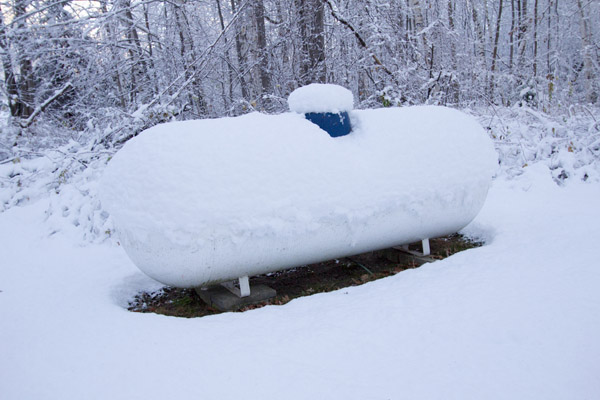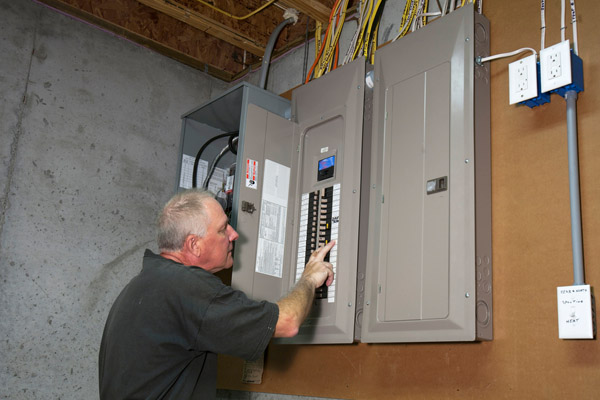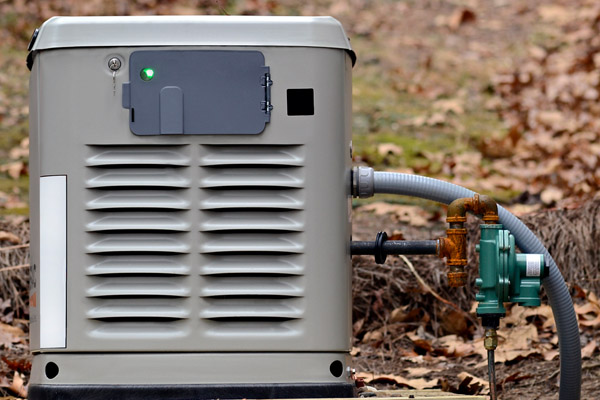Things To Look For On A Generator To Make Sure It’ll Start Up Correctly When You Need It The Most

Power outages may be rare but they cause a great deal of inconvenience. Homes go dark, air conditioners stop, hot water can’t flow, fans stop moving, televisions go blank, and desktop computers shut down. It’s hard to move around and life seems to freeze until the power comes back on. A backup generator can step in to fill the void in such situations so life can go on in an instant. However, the owner must take good care of it to make sure that it will actually start correctly when needed. Homeowners will need to perform manual testing and a backup generator inspection on a regular basis to ensure reliable operation.
How To Inspect Your Backup Generator
This article discusses tips on what to look for when inspecting your whole-house generator.
1. Whole-House Generator Warnings Or Alarms
A visual inspection is not enough. Simulate an emergency situation by turning off the main switch and see if the generator starts up automatically. Walk around the house to see if the power has been restored everywhere. Check whether it is able to handle the load. See whether the generator unit has provided any warning signs or alarms. Consult the manual to understand what these signify and find out how they can be resolved. Write down your observations and actions in a notebook. If you notice any issues, be sure to call R.F. Ohl for generator services.
2. Adequate Backup Generator Fueling

The generator can only perform if it has adequate fuel. If this fuel is stored in a tank, then make sure that this still has enough to keep the machine running during an emergency power outage. If it is connected to the existing infrastructure, then check the hoses and fittings. You should be confident that natural gas is reaching the unit. If the hoses have holes or cracks, then look more closely as there might be leaks in the system. If you notice any leaks or other issues, call R.F. Ohl as soon as possible.
3. Battery Corrosion
Inspect the battery from all angles until you are satisfied that there is no corrosions in the contacts. Rust would prevent it from performing at optimum levels. See whether the battery is charged. If it isn’t charging, then replace this immediately. If the battery is in good condition, then you should also use this opportunity to clean the contacts, dry them up, and shield them against anything that might cause corrosion in the future. Once again, if you notice any issues, be sure to call R.F. Ohl for superior generator services.
4. Auto Generator Startup
Generators can kick in during power outages in two ways. The first is through manual startup with the owner switching them on whenever they are needed. This might be prudent if you are conserving fuel and limiting use. The second is through an automatic startup wherein the generator senses the lack of power and springs forward to fill the void. Use this if you want fast switching and seamless transitions. This is especially important of the generator is in a remote area that might be hard to reach in the dark.
5. Circuit Breaker

The electrical components should get some attention as well. You should make sure that the circuit breaker remains closed after you run the backup generator. The wiring should be in good condition with no copper exposed. Sometimes pests can get in and chew these up. Shorts and fires can happen in the worst-case scenario so fix wear and tear right away. Faulty components should be replaced as well. Call R.F. Ohl and schedule a free generator repair estimate.
6. Engine Oil And Coolant
The engine oil is responsible for lubricating the moving parts. This prevents excessive heating due to friction. The engine can last a lot longer because the parts will not wear out right away. The generator can keep on running for many hours without any issues. If the engine oil is low, then the generator might shut down to prevent damage. You can use a dipstick to check. The coolant will also regulate the engine temperature. If it is running low, then add more to boost the level. You can also call R.F. Ohl to schedule routine generator maintenance.
7. Clearance For Your Standby Generator

The backup generator will need good airflow to keep in cool as it runs. The coolant and engine oil take care of the internals. Homeowners can make sure that the exterior will not encourage heat build-up by maintaining significant clearance between the unit and its surroundings. Remove objects that are too close. For example, if there is vegetation nearby, then trim this on a regular basis to prevent the overgrowth from reaching the unit.
Conclusion
If you find anything that requires repairs, then call an R.F. Ohl technician to perform these for you. Professionals can complete these tasks fast. You can be confident about the quality of their workmanship. They can also spot issues that you might have missed during your inspection and fix those as well. With their help, you can have a reliable generator for emergencies.
Call R.F. Ohl For Excellent Standby Generator Services

For whole-house generator installations, repairs, and maintenance services, contact R.F. Ohl. You can trust R.F. Ohl to help you choose the best home generator for your needs. Likewise, we can provide standby generator repairs and maintenance services that will keep your backup generator running properly for many years to come. You can count on us to provide you with excellent service and prices. Call today to schedule a free, in-home consultation.
Click here to contact us today or give us a call at (610) 377-1098 if you have any questions.